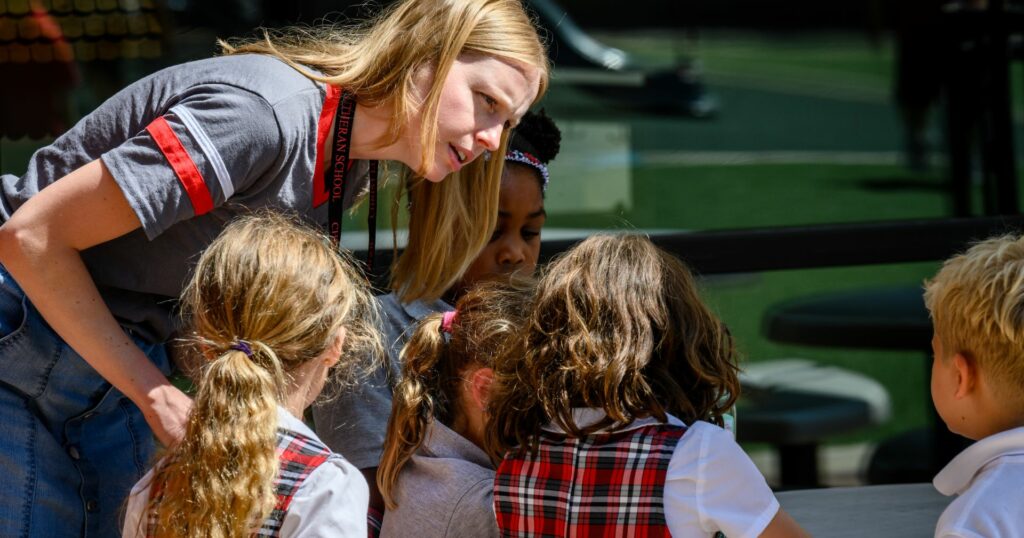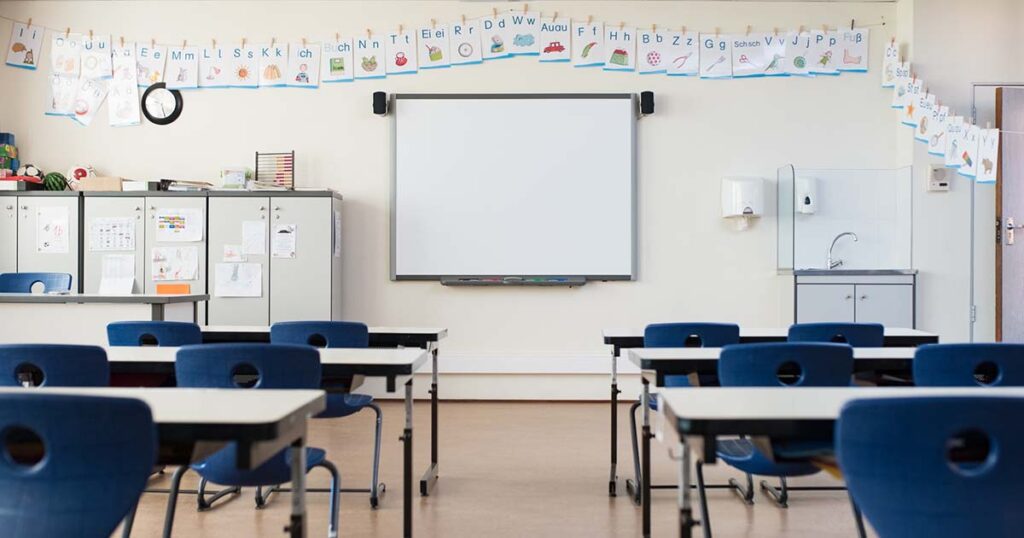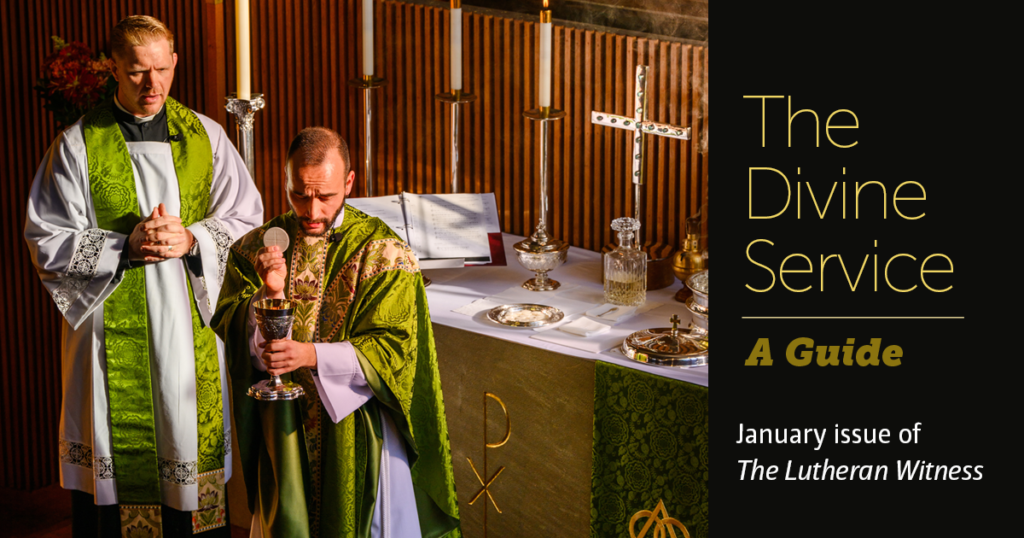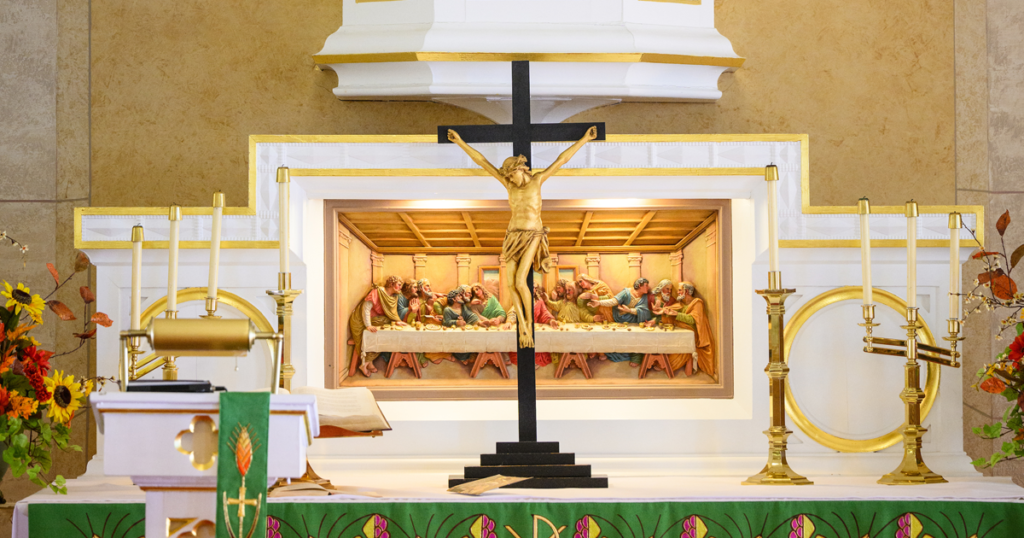How our schools are preserving faithful Lutheran education in a difficult context
By Sarah Reinsel
Our Lutheran schools are a treasure and a tremendous blessing to the LCMS. Every school year, thousands upon thousands of children hear the Gospel in these classrooms.
Over 1,600 early childhood centers and preschools, 800 elementary schools, and 130 Lutheran high schools operate in the United States. Together, they make up the second-largest parochial school system in the United States, second only to Catholic schools.
Yet times are as challenging as ever when it comes to operating a school, no matter its size or community. Through a number of interviews, LCMS district education executives, school administrators and teachers shared these core challenges and potential solutions.
Challenge #1: Traditional funding models have become less sustainable.
Many Lutheran schools were originally founded for the sake of educating the congregation’s children. These schools were small and lean — in the earliest days, the pastor may have been the only teacher, and because of the small scale, education could also be offered to families for free.
Of course, schools did not stay this way — throughout the 20th century the demand for Christian education caused schools to grow and grow. To sustain themselves, schools began charging tuition: Non-members would pay full tuition, while tuition for members would be discounted. However, once schools became dependent on tuition, they also had to start competing with other schools in the area (whether private or public) for students. Once families began having to pay, members and non-members alike would shop around for the best fit for their child.
Dependence on tuition for funding gave rise to another challenge: To what extent should Lutheran schools try to compete with other schools in the area? Should they add the sports and extracurriculars that the local public school might be offering? Should they redouble their efforts to offer an excellent education?
While education in the LCMS faith used to be the main draw of LCMS schools, “now [many students] are coming for a really high-quality education,” said DJ Schult, education executive for the LCMS North Wisconsin District.
This trend has only increased in the wake of the COVID-19 pandemic. In the past four years, many Lutheran schools have experienced a boom in enrollment. Families unhappy with how their school handled pandemic guidelines, or disillusioned with the quality of education offered, have been seeking out private education more and more.
Whether a Lutheran school is completely full or facing fierce competition, staying financially healthy remains a huge challenge for every school because enrollment fluctuates, the cost of educating each student is higher than ever, and the congregation’s contribution to the school simply doesn’t go as far as it used to.
Here are some ways Lutheran schools can withstand these financial challenges:
1. Continue to do what Lutheran schools do best: offer an excellent Lutheran education. The post-pandemic rise in enrollment may very well continue. More and more families are becoming uncomfortable with the social agendas pushed in public and even private schools, and they may seek out a Christian environment for their children.
2. Accurately assess how much it costs to educate a student. Many schools don’t have an accurate sense of how much it costs to educate each student, and tuition doesn’t always reflect this cost. Underestimating this cost can cause schools to go over budget or underpay their teachers. By assessing the true cost of educating each student — taking into account the maintenance of school facilities, the cost of utilities, faculty and staff salaries, and the like — schools will be able to budget properly. Schools can also use this estimate to develop adequate scholarship funds so that tuition is covered with existing funds, rather than waived, for a student in need.
Challenge #2: Many school families are not church members.
For many Lutheran schools, most of the families they serve are not members of the church; many may not even be Christian. At the same time, LCMS congregations are aging. Long-time church members sometimes feel distant from the young, non-member families their school serves.
“It used to be that about 80% of your students came from your congregation. Now about 80% come from the community,” said Schult. “Congregations are used to thinking that the school was there to take care of their members. So there’s a mindset shift that has to happen in congregations, because the school can be the most effective and meaningful outreach that the church can provide.”
Here are some ways Lutheran churches and schools can build relationships with non-members and bear faithful witness to the Gospel:
1. Make sure the pastor is highly visible in the life of the school. When called teachers and member students are in the minority, it is a challenge to maintain the school’s Lutheran identity. The pastor can help with this by being a resource for non-Lutheran teachers on doctrinal questions, by teaching theology classes or having “ask the pastor” days in the classroom, and by leading weekly chapel and staff devotions.
2. Involve students in the Divine Service many times throughout the school year, and when non-member parents come with their children, make them feel welcome. For instance, at Trinity Lutheran School in Sheboygan, Wis., the music program regularly gives students the opportunity to sing in the Divine Service. “While of course not every child attends, not every parent attends, we’re inviting them to come worship numerous times a year, and we’re inviting them to come at a time when other young families are guaranteed to be there,” said Dr. Jenna Roeske, Trinity’s principal. “If I’m going to a church that I’m unfamiliar with, at least I know that my friend whose kid is also in preschool is going to be there too, and maybe we could sit together.”
Challenge #3: Teachers and administrators are in short supply.
Every Lutheran school throughout the Synod faces a teacher and administrator shortage.
Lewis Rodgers, education executive for the LCMS Central Illinois District, said that throughout the Synod there has been “a bumper crop of retirees that held on through [the COVID-19 pandemic] and postponed their retirement, and now that we’re out of COVID, there seems to be more teachers retiring.”
And the number of students graduating from the Concordia universities is not keeping up with the number of open positions. In 2023, schools made 300–400 requests to the Concordia universities for Lutheran school teachers, but only about 70 students graduated with teaching degrees.
Calling rostered teachers from the field poses many difficulties as well.
“Currently, the economic conditions in our country are a disincentive for people to even consider having their names on a call list. [For instance,] if I have to buy a new house the mortgage rates will be much higher than the house I’m currently in. If I’m moving to Colorado, I know the cost of living is far greater there than it is in some other places,” said the Rev. Paul Albers, education executive of the LCMS Rocky Mountain District.
The teacher shortage has also caused a shift in the makeup of a typical LCMS school faculty. A generation or two ago, most, if not all, teachers on the faculty were called church workers, but now, at many schools, called teachers are in the minority. To a certain extent, Lutheran schools in the eastern and western United States have always struggled to find rostered Lutheran school teachers, simply because there are fewer Lutherans in these regions; now, many Midwestern schools are feeling the pinch too.
Finally, many Lutheran school teachers are experiencing burnout, and many schools see high turnover among new, young teachers. The COVID-19 pandemic, which put a tremendous amount of pressure on teachers, also exposed some underlying problems with the average teacher’s workload.
“The expectations placed on school staff have not only been increasing for the last 10, 15, 20 years, but it’s exponentially different than it was. … [Expectations] are more diverse when it comes to addressing student needs than they’ve ever been before,” said Albers.
What are some ways schools can deal with these challenges?
1. Seek out qualified Lutheran teachers who currently work at other schools in the community. Teaching at a Lutheran school is becoming very appealing to public school teachers especially. “We’ve had people walk in from public schools and say, ‘What does it take for me to come teach here?’ [Social issues] are also becoming more and more of an issue for teachers — pronoun preferences, transgender issues and so on. It’s making people want to come teach at a Lutheran school. … Some teachers say, ‘I may not get my free periods, I may be teaching all day long, I may be making less money, but I’m willing to make that change for the sake of my beliefs,” said Rodgers.
2. Remove barriers to colloquy. Many schools and districts are funding the tuition for teacher colloquy. The North Wisconsin District, for example, will pay for any colloquy tuition not covered by scholarships from the Concordia University Education Network (CUEnet).
3. Reduce the educational debt of church workers. High school and college students who may be considering a career in church work are often dissuaded by the high price tag of a college education combined with the potentially low salary they will make as a teacher. However, all of the Concordia universities have significant scholarships available to church work students, and many districts also have grant programs that help new church workers pay off their student debt.
4. Reduce teachers’ burdens so that they can focus on teaching. Oftentimes, demands outside their classroom responsibilities cost teachers too much time and energy. Kevin Gundell, principal of Holy Ghost Lutheran School in Tonawanda, N.Y., suggested that channeling parents’ energy into organizing extracurriculars could relieve teachers’ burdens. “We’ve had some really neat clubs start that way, where parents are doing two-thirds of the work, instead of the teacher doing all of it. And a teacher is appointed advisor [for] quality assurance. [This strategy] also builds community.” Additionally, providing teachers with enough personal days, and ensuring they aren’t made to feel guilty for using them, will keep teachers energized as they go about their work.
5. Mentor new teachers and potential administrators. For any new teacher, the first few years are demanding. Giving them enough support can help them become a lifelong teacher. Additionally, the best place to find new administrators is among current teachers who show leadership potential. Many current LCMS administrators said that their best preparation for administrative work came from their mentors.
6. Recruit the next generation of teachers by helping current students envision teaching as a lifelong, joyful vocation. “Even if you had a bad teaching day, it’s not about you. It’s about the Spirit working within you. You’re the vessel,” said Roeske, who regularly gives talks to Lutheran high school students about pursuing a teaching vocation. “Even on your worst days, God is still able to work through you, as long as you are giving the children God’s Word every day. And so, teaching removes some of that existential pressure of, ‘Oh my goodness, am I actually leading a life that matters?’ Every single day matters. It has incredible, eternal benefit.”

This article originally appeared in the August 2024 issue of The Lutheran Witness.






Suggested reading: From Candy Sales to Committed Donors: A Guide to Financing Christian Schools
I am persuaded that a church-sponsored school can shortchange itself when it sets tuition rates below the school’s cost per student, because then those parents who are able and willing to pay the full cost of their child’s education (if they knew what that cost was), don’t. But when tuition fully reflects the per-student costs — carefully assessed and forthrightly communicated — more parents will pay what it actually costs to educate their child, recognizing the fundamental fairness of doing so. Then the funds made available from the congregation and individual donors can be directed more efficiently to meeting the gap between tuition and ability to pay in cases where a child would not be enrolled without financial support.